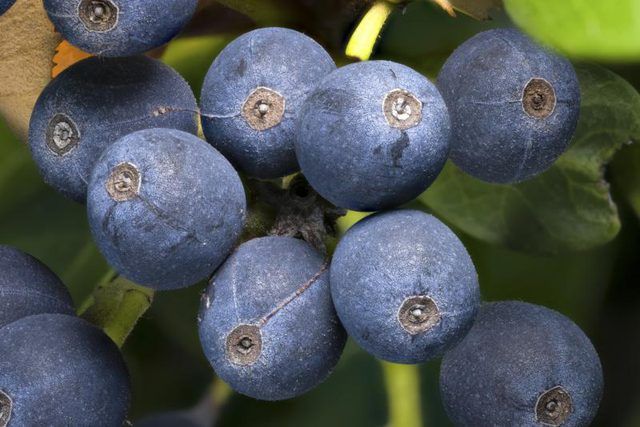Bulbs
Flower Basics
Flower Beds & Specialty Gardens
Flower Garden
Garden Furniture
Garden Gnomes
Garden Seeds
Garden Sheds
Garden Statues
Garden Tools & Supplies
Gardening Basics
Green & Organic
Groundcovers & Vines
Growing Annuals
Growing Basil
Growing Beans
Growing Berries
Growing Blueberries
Growing Cactus
Growing Corn
Growing Cotton
Growing Edibles
Growing Flowers
Growing Garlic
Growing Grapes
Growing Grass
Growing Herbs
Growing Jasmine
Growing Mint
Growing Mushrooms
Orchids
Growing Peanuts
Growing Perennials
Growing Plants
Growing Rosemary
Growing Roses
Growing Strawberries
Growing Sunflowers
Growing Thyme
Growing Tomatoes
Growing Tulips
Growing Vegetables
Herb Basics
Herb Garden
Indoor Growing
Landscaping Basics
Landscaping Patios
Landscaping Plants
Landscaping Shrubs
Landscaping Trees
Landscaping Walks & Pathways
Lawn Basics
Lawn Maintenance
Lawn Mowers
Lawn Ornaments
Lawn Planting
Lawn Tools
Outdoor Growing
Overall Landscape Planning
Pests, Weeds & Problems
Plant Basics
Rock Garden
Rose Garden
Shrubs
Soil
Specialty Gardens
Trees
Vegetable Garden
Yard Maintenance
How Tall Do Blueberry Bushes Grow?
How Tall Do Blueberry Bushes Grow?. Edible blueberries (Vaccinium spp.) include four cultivated, sun-loving shrub species and an array of different varieties and hybrids, which vary considerably by height and size. All bear fruit suitable for use in raw and cooked products. Regardless of mature size, bushes all have considerable ornamental value,...

Edible blueberries (Vaccinium spp.) include four cultivated, sun-loving shrub species and an array of different varieties and hybrids, which vary considerably by height and size. All bear fruit suitable for use in raw and cooked products. Regardless of mature size, bushes all have considerable ornamental value, with pink-tinged white spring flowers, blue fruit and leaves that turn red in the fall. Choosing the right blueberry bush depends on both the geographic location as well as the amount of available space for the plant.
Highbush Blueberry
Hardy in U.S. Department of Agriculture plant hardiness zones 5 through 8, highbush blueberry (Vaccinium corymbosum) grows between 6 and 12 feet tall and 8 and 12 feet wide. Native to eastern North America, the shrubs thrive in moist, acid soil. Though self-fertile, highbush blueberries benefit from cross pollination by varieties within the species. A good combination is "Bluecrop" (Vaccinium corymbosum "Bluecrop"), hardy in USDA zones 5 to 7, and "Blueray" (Vaccinium corymbosum "Blueray"), hardy in USDA zones 3 through 7. "Bluecrop" grows to 8 feet tall and wide, while "Blueray" rises 4 to 5 feet tall and wide.
Rabbiteye Blueberries
Often cultivated in the South where conditions may be too warm for highbush blueberries, rabbiteye blueberries (Vaccinium ashei), hardy in USDA zones 7 or 8 through 9, depending on variety, grow 8 to 10 feet high. Rabbiteyes require cross pollination to produce fruit, so choose at least two varieties with similar ripening times. Compatible plants include "Beckyblue" (Vaccinium ashei "Beckyblue"), hardy in USDA zones 8 through 9; "Bonita" (Vaccinium ashei "Bonita), hardy in USDA zones 8 through 9; and "Woodard" (Vaccinium ashei "Woodard"), hardy in USDA zones 8 through 9. "Woodard" is somewhat shorter than other rabbiteyes, growing only 3 to 4 feet tall.
Half-High Blueberry
Half-high blueberries like "Chippewa" (Vaccinium "Chippewa"), hardy in USDA zones 3 through 8, are a cold-tolerant hybrid between highbush blueberries and the related lowbush blueberries (Vaccinium angustifolium), hardy in USDA zones 2 to 5 or 6, depending on variety. "Chippewa" grows 3 to 4 feet tall and wide and is especially suitable for USDA zones 3 through 4. Plant close to related varieties, like half-high "Polaris" (Vaccinium "Polaris"), hardy in USDA zones 3 through 8. While most half-highs grow 24 inches tall and about 30 inches wide, one smaller variety "Northsky" reaches only 10 to 18 inches tall.
Southern Highbush
Southern highbush blueberries ( Vaccinium corymbosum X Vaccinium darrowiiwere) were created by the University of Florida by crossing wild blueberries found in the southeast with highbush blueberries. They are suitable for use in warmer locations of the U.S. that experience mild winters. The blueberries require low-chilling hours, bloom earlier than northern varieties and produce the same high-quality fruit. The evergreen "Sharpblue" grows best in areas with mild winters and requires less than 500 chilling hours and grows up to 6 feet tall at maturity. It is hardy in USDA zones 7 through 10. "Sunshine Blue" requires less than 150 chill hours and produces throughout summer, growing only 3 feet tall. It is hardy in USDA zones 5 through 10.
Dwarf Hybrids
Blueberry breeders have developed fruitful varieties and hybrids suitable in size for container culture too. Among these are "Jelly Bean" (Vaccinium corymbosum BrazelBerries "Jelly Bean"), hardy in USDA zones 4 through 8 and growing only 12 to 24 inches tall and wide. Another dwarf grower that might be planted nearby is "Peach Sorbet" ((Vaccinium corymbosum BrazelBerries "Peach Sorbet"), hardy in USDA zones 5 through 10 and growing up to 24 inches tall. Dwarf varieties thrive in the same moist, acidic conditions as their larger blueberry relatives.